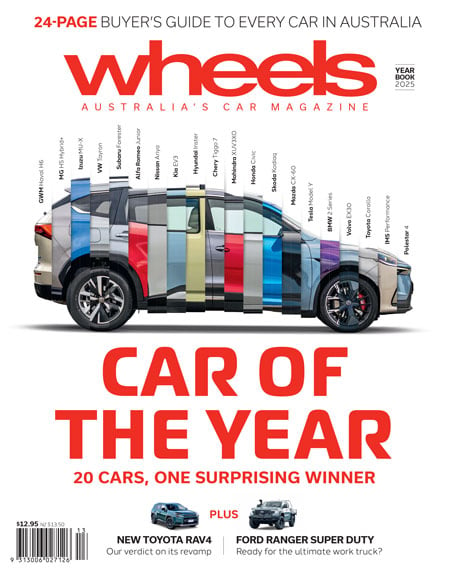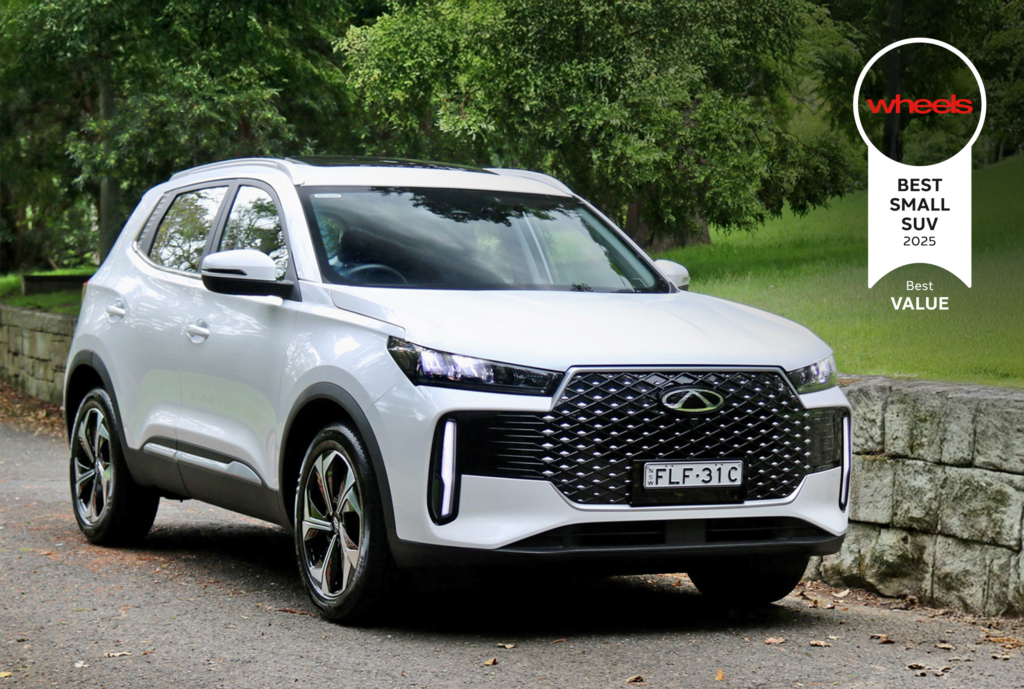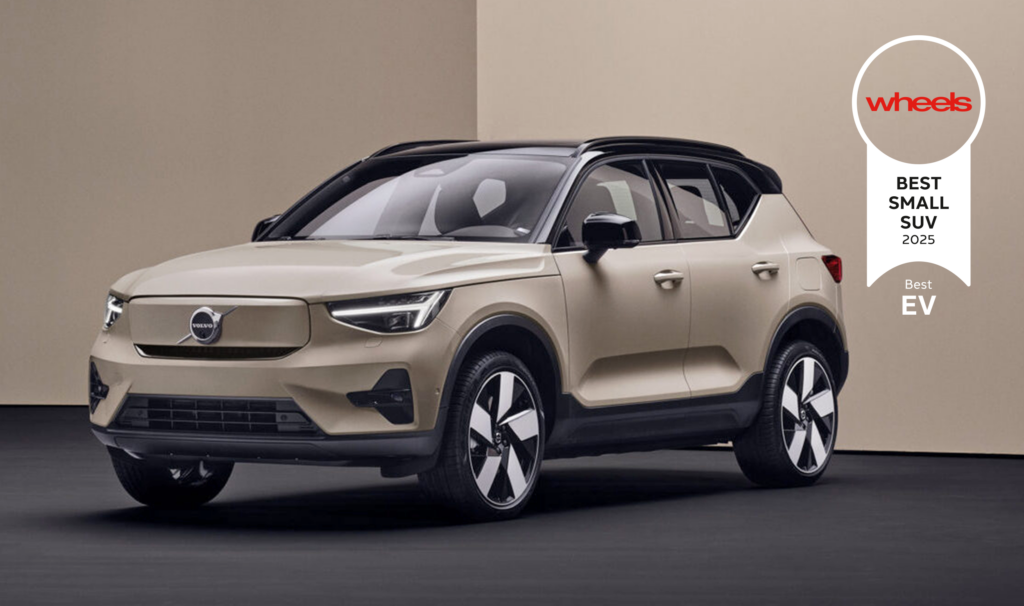The Contenders
- MG ZS Hybrid+
- Mazda CX-30
- Nissan Qashqai
- Toyota Yaris Cross
- Hyundai Kona
- Kia Seltos
- Skoda Kamiq
- Volkswagen T-Cross
- Subaru Crosstrek
- Honda HR-V
- Volkswagen T-Roc
- Toyota Corolla Cross
- Mitsubishi Eclipse Cross
- Suzuki Jimny
- BYD Atto 3
- MG ZS EV
Winner: MG ZS Hybrid+
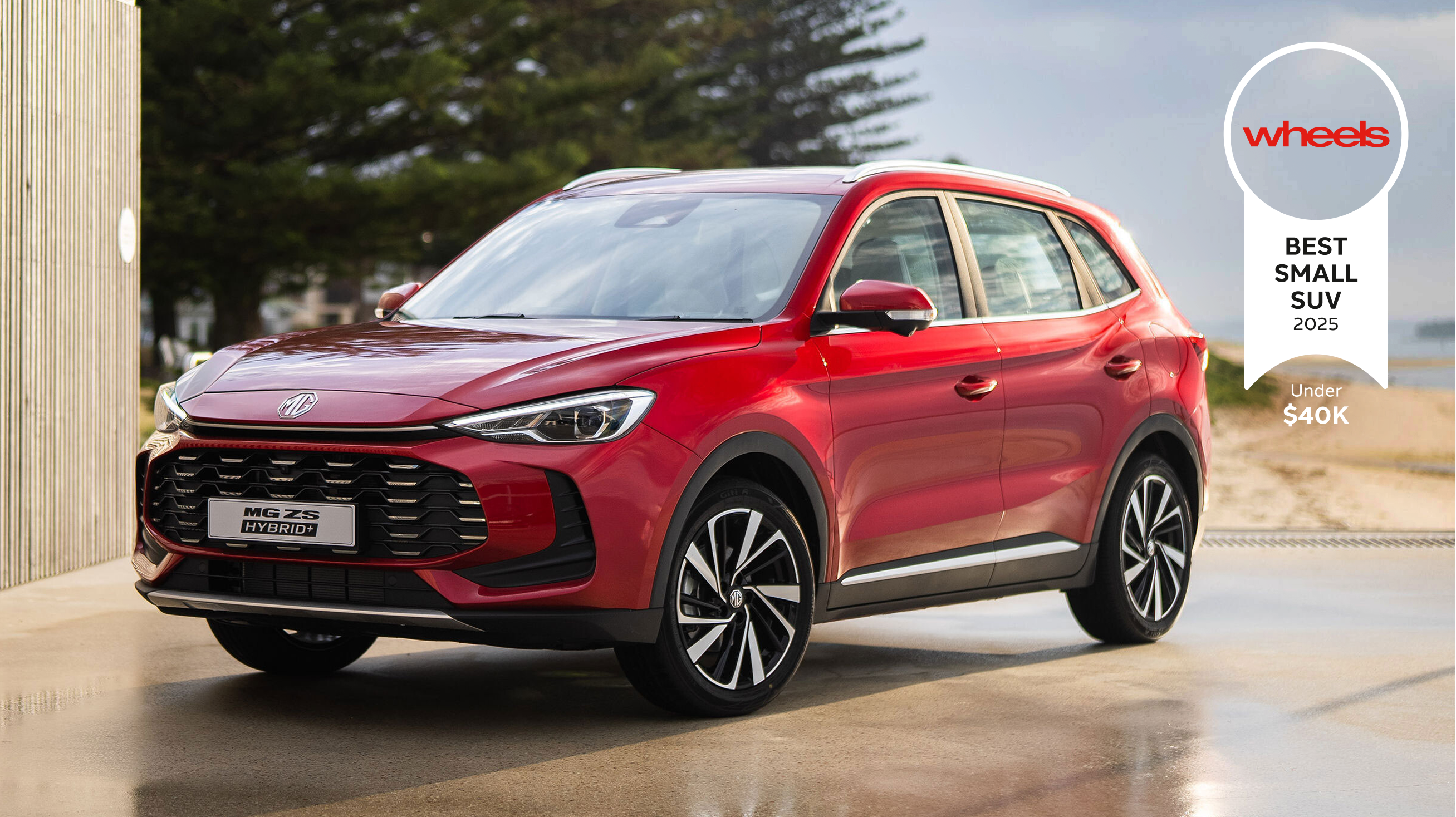
- Price: From $33,990 drive away (Excite)
- Drivetrain: 1.5L 4-cylinder hybrid, 158kW/465Nm, 3-speed CVT auto
- Combined fuel economy, CO2 emissions, fuel type: 4.7L/100km, 110g/km, 95RON
- Warranty: 10-year/250,000km, one year of roadside assistance
- Five-year service cost: $1,995 ($399 per year)
| Driving | |
|---|---|
| Interior | |
| Practicality | |
| Overall value |
Things we like
- Big improvement on the previous ZS
- Enlarged size adds more interior space
- Hybrid is punchy and efficient
Not so much
- Intrusive active safety systems
- Too much reliance on touchscreen
- Finicky steering wheel buttons
The second-generation MG ZS first launched in Australia in November 2024 in Hybrid+ spec priced from $33,990 drive away. Petrol-powered models have just arrived and lower the price of entry significantly to just $26,990 drive away, but we think the Hybrid+ is worth the extra spend.
While not as cheap as the ZST, the new ZS is better equipped and it’s also larger and more refined. The cabin is more modern with higher quality materials, while the growth spurt has allowed for a larger rear seat and boot – the size has increased from a healthy 359 litres to a large 443L with the seats up, for example.
The infotainment system has upgraded to MG’s latest unit, which is much easier to use than the system in the ZST and while it doesn’t feature smartphone mirroring that’s wireless, it’s still got sat-nav, digital radio and access to the company’s ‘iSmart’ live services so that owners can lock and unlock the car, turn on the climate control to warm or cool the car before getting in and even check where the car is.
On the road, the new ZS Hybrid+ presents a compelling option in the small SUV segment as it’s more comfortable than the ZST and CX-3, and is a generally relaxing car to drive. The 1.5-litre hybrid drivetrain is powerful making 158kW, yet efficient rated at just 4.7L/100km. The only annoyance comes from the lack of steering wheel reach adjustment – just like the ZST – and the overactive speed limit assistance, which makes a fuss if you travel even 1km/h above the speed limit.
But the new MG ZS Hybrid+ is a big improvement on the car it replaces and in the $30,000-$40,000 small SUV segment, does quite well overall. It offers more space and more equipment than a lot of rivals, an industry-leading warranty and cheap servicing, now with 15,000km intervals.
Mazda CX-30

- Price: From $34,060 plus on-road costs (Pure)
- Drivetrain: 2.0L or 2.5L 4-cylinder petrol, 114kW/200Nm or 139kW/252Nm, 6-speed auto, 2WD or AWD
- Combined fuel economy, CO2 emissions, fuel type: 6.3-6.8L/100km, 147g-157/km, 91RON
- Warranty: Five-year/unlimited km, five years of roadside assistance
- Five-year service cost: $2,202-$2,235 ($440-$447 per year)
| Driving | |
|---|---|
| Interior | |
| Practicality | |
| Overall value |
What we like
- Fun to drive with great handling
- Excellent interior quality and design
- Even the base model features a lot of safety equipment
Not so much
- Rear seat and boot could be larger
- Centre screen touch functionality only for phone mirroring
- Not that fuel efficient
The Mazda CX-30 – the 2021 Wheels COTY-winning Mazda CX-30, no less – remains a desirable and borderline luxurious option in the small SUV segment thanks to its handsome styling and cabin full of lovely materials. Even in the entry-level CX-30 Pure, quality is excellent with plush trims and understated details. It would definitely make you think twice about spending double on something from a more premium manufacturer.
Cabin quality aside, there’s lots to recommend about the CX-30. If you like driving, the CX-30 is definitely one to test drive as it offers keen dynamics and fun handling. While its ride could be softer, it still offers a nice balance and road noise levels are impressively low. While it’s not the fastest offering, even the entry engine provides reasonable thrust and sounds good in doing so, plus the transmission is intuitive and smooth.
The CX-30’s engine range has been simplified to either a 2.0-litre or 2.5-litre four-cylinder petrol engine with a six-speed auto and optional all-wheel drive with the 2.5L engine high up the range. Simple, though the lack of a hybrid option hurts the CX-30 as neither engine option is particularly fuel efficient in the real world.
What’s more impressive about the CX-30 is that the whole range features a big suite of active safety kit like AEB, adaptive cruise control, blind-spot monitoring, auto high beam and even a head-up display. Some models like the Touring LE and Astina add adaptive lane guidance, front cross-traffic alert and a 360-degree camera, but even the base Pure can be optioned with them if buyers want even more safety features.
It’s on the practicality scale that the CX-30 falls a little bit, as its rear seat and boot are smaller than you might expect with just 317 litres on offer. Plus, its service pricing isn’t cheap either. But in summary, it’s easy to see why the CX-30 is a former Wheels COTY winner. Its exotic styling and interior quality make it look far more expensive than it actually is, and the whole range is well equipped, too – especially with safety kit. It’s fun to drive and while the engines aren’t the thriftiest or cheapest to service, they are fun to use. If you’re after a small SUV, the CX-30 should definitely be on your test drive list.
Nissan Qashqai
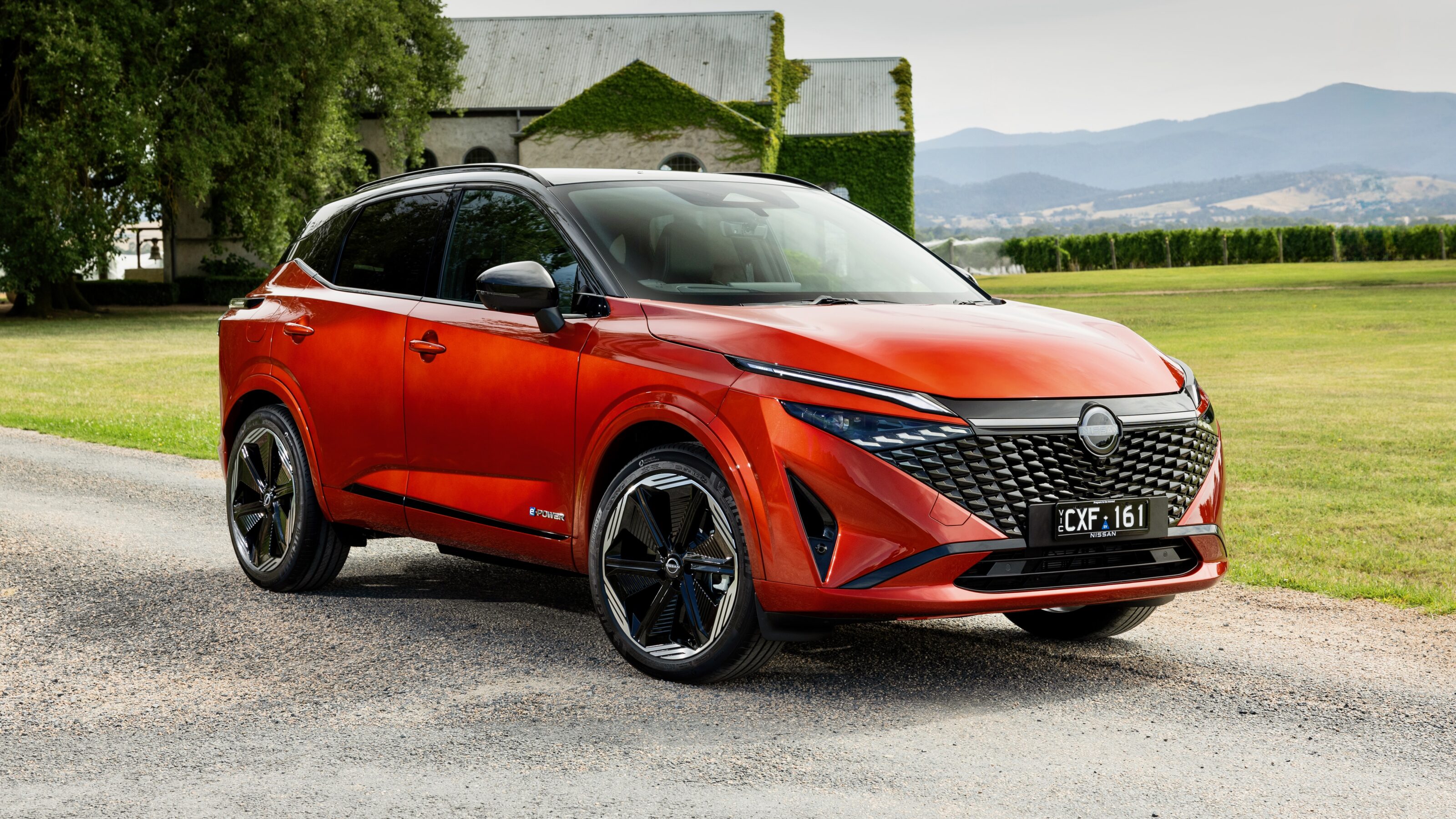
- Price: From $34,060 plus on-road costs (ST)
- Drivetrain: 1.3L turbo 4-cylinder or 1.5L turbo hybrid 3-cylinder, 110kW/250Nm or 140kW/330Nm, CVT auto
- Combined fuel economy, CO2 emissions, fuel type: 5.2-6.1L/100km, 117g-138/km, 95RON
- Warranty: Five-year/unlimited km extendable to 10-years/300,000km with servicing through Nissan, 12 months of roadside assistance
- Five-year service cost: $1,995 ($399 per year)
| Driving | |
|---|---|
| Interior | |
| Practicality | |
| Overall value |
Things we like
- Unique e-Power hybrid drivetrain option
- High quality interior, even in base model
- Facelift adds value to the range
Not so much
- Expensive at the top of the range
- Cheapest hybrid is still over $52,000 drive away
- Needs premium unleaded fuel
The Nissan Qashqai – formerly Dualis in Australia – is a car that we think should sell stronger. While its 6,560 units sold in 2024 were reasonable, it has more sales potential and the recent facelift should help thanks to an improved value equation, particularly at the entry level where a lot more standard equipment did not – surprisingly – lead to a price rise.
The cabin of the Qashqai is one of the highest quality in the segment thanks to plenty of soft touch materials and lively damped switchgear. A 12.3-inch touchscreen is now standard across the range and it’s more modern than the former system formerly used in lower models – it’s crisp and well-featured. The rear seat of the Qashqai is reasonably spacious and will fit two adults fine, and the boot measures a healthy 479 litres with the seats up and 1,422L with them folded.
Under the bonnet of the Qashqai is a choice of two engines: a 1.3-litre turbo four-cylinder or a 1.5-litre turbo three-cylinder hybrid, with both driving only the front wheels through a CVT automatic transmission. Both need premium unleaded fuel, but both are quite fuel efficient – especially the hybrid in the real world.
On the road, the Qashqai impresses with a mature and refined driving experience that feels quite European, which is no surprise given that it was built there and designed for those roads. Both available drivetrains feel peppy for the segment, and impress with their low end grunt. Even the CVT transmission is mostly un-CVT like in its operation thanks to well defined stepped ratios.
Nissan’s five-year warranty can impressively be extended to 10 years in total if serviced through a Nissan dealership, while the brand has also improved its five-year service cost at just $1,995. Overall, the Qashqai is a classy and refined entrant to the segment that deserves more love from buyers. It’s well rounded with a great cabin, reasonable practicality, a solid driving experience and gutsy drivetrains, including the unique range-extended hybrid system. While it’s still not cheap to buy, the recent facelift improved the value equation and it’s a more worthy buy as a result.
Toyota Yaris Cross
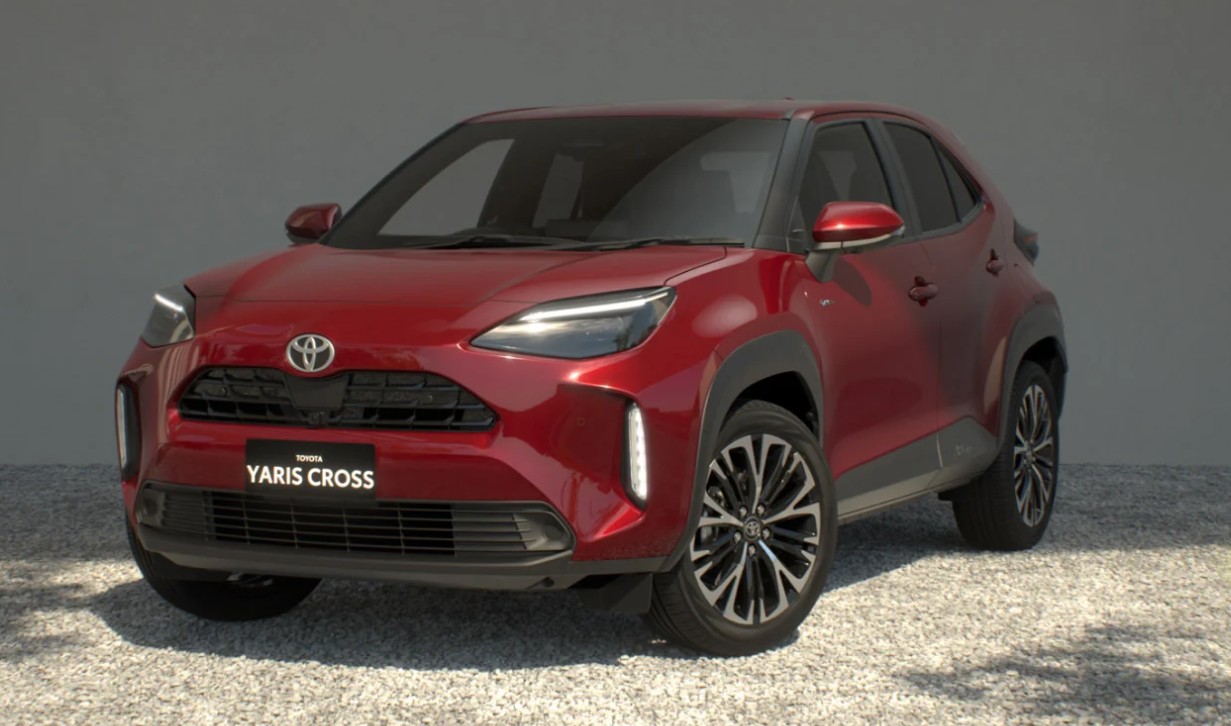
- Price: From $30,900 plus on-road costs (GX 2WD)
- Drivetrain: 1.5L 3-cylinder hybrid, 85kW, CVT auto, 2WD or AWD
- Combined fuel economy, CO2 emissions, fuel type: 3.8-4L/100km, 86-90g/km, 91RON
- Warranty: Five-year/unlimited km and 8-year/160,000km battery, no roadside assistance
- Five-year service cost: $1,275 ($255 per year)
| Driving | |
|---|---|
| Interior | |
| Practicality | |
| Overall value |
Things we like
- Excellent fuel economy in the real world
- More practical than its size suggests
- Even the base model is well equipped
Not so much
- European models get more equipment
- More refinement would be good
- Rear seat not huge
The Toyota Yaris Cross is the smallest SUV that the company sells in Australia. The Yaris Cross is like its Corolla Cross sibling: larger and more practical, though using the same name as the car on which it’s based – in this case, the Yaris hatchback. Pricing starts at $30,900 for the entry-level GX and like all other non-performance/4WD/commercial Toyotas sold locally, the Yaris Cross is now only offered in hybrid form.
Under the bonnet is a 1.5-litre three-cylinder hybrid drivetrain making 85kW, which sends power to either the front or all wheels via a CVT gearbox. The claimed fuel consumption for the Yaris Cross ranges from just 3.8L/100km for 2WD models to 4L/100km for the slightly heavier AWD model, which is excellent. You’ll likely get similar consumption in real life too.
On the road, the Yaris Cross impresses with solid driving dynamics and a comfortable ride quality, though refinement could be better as both engine and road noise make themselves known.
The cabin of the Yaris Cross is good quality and funky, and a recent update gave it a digital driver’s display and new infotainment software to make it more modern and user-friendly inside. There are multiple storage spots, while the new central armrest has made it more comfortable. While the back seat isn’t huge, it will take two adults fine. The 390-litre boot is actually larger than all-wheel drive Corolla Cross models, though it shrinks to 316L with its own AWD system fitted.
Like the Corolla Cross, five-year servicing for the Yaris Cross is cheap and both its mechanical and battery warranties are extended by servicing through a Toyota dealership. Overall, the Yaris Cross is an excellent entry-level SUV that’s very fuel efficient, nice to drive and good quality, though it could be more refined and cheaper across the range.
Hyundai Kona
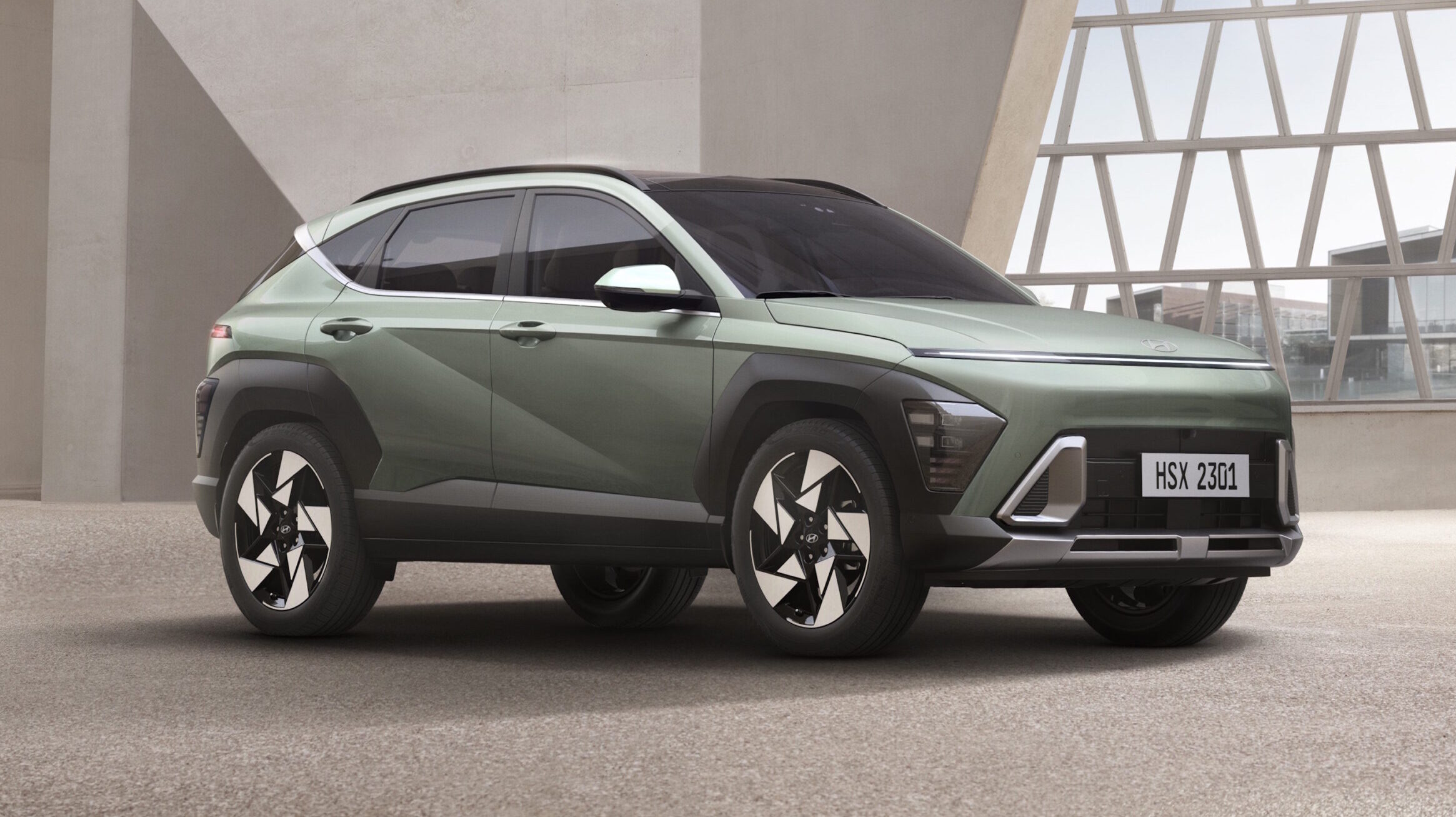
- Price: From $32,500 plus on-road costs (Kona 2.0L petrol)
- Drivetrain: 2.0L or 1.6L turbo or 1.6L hybrid 4-cylinder petrol engines, 110kW/180Nm (2.0L), 146kW/265Nm (1.6T) or 104kW/265Nm (hybrid), CVT (2.0L) or 8-speed auto (1.6T) or 6-speed dual-clutch auto (hybrid), 2WD or AWD (1.6T)
- Combined fuel economy, CO2 emissions, fuel type: 3.9-7.6L/100km, 88-174g/km, 91RON
- Warranty: Five-year/unlimited km and 8-year/160,000km battery, 12 months’ roadside assistance with each dealer service
- Five-year service cost: $1,995 ($399 per year) – $2,575 ($515 per year)
| Driving | |
|---|---|
| Interior | |
| Practicality | |
| Overall value |
Things we like
- Wide range of variants
- More practical than the last Kona
- Well equipped across the range
Not so much
- Petrol engines can be thirsty
- Cabin quality could be better
- No hot Kona N this time around
The second-generation Hyundai Kona has been on sale in Australia for over a year now and, like its predecessor, is proving popular with over 17,000 sold last year alone. The new Kona is larger, more mature, more refined and features an optional hybrid drivetrain for the first time locally. The hot Kona N is no longer around unfortunately, but the 146kW Kona N Line is still quick.
Where the Kona has seen the biggest improvement is in its interior design as it’s now more up-to-date than the previous edition, which felt dated in comparison to newer Hyundai models. The Kona’s cabin could be better quality, but there’s no denying the awesome practicality and pleasing ergonomics throughout.
The rear seat of the new Kona is larger than the old one and two adults will fit perfectly fine this time around. The boot is also larger now at 407 litres seats up and 1,241L with them folded, while there are some clever tricks like a dual-level boot floor to help practicality further. Impressively, all models feature a spare wheel.
This time around are a choice of three drivetrains: a naturally aspirated 2.0-litre petrol, a 1.6-litre hybrid or a turbocharged 1.6-litre, all mated to automatic transmissions – being CVT, dual-clutch and torque converter, respectively. The former two are front-wheel drive, with the turbo engine exclusively all-wheel drive in Australia. The new Kona drives well with a great ride quality and improved refinement as well, especially with road noise.
In short, the new Hyundai Kona is a worthy competitor in the small SUV segment thanks to its all-round ability: it’s much more practical this time around, good to drive, more practical, cheap to service and – finally – offers a hybrid choice.
Kia Seltos
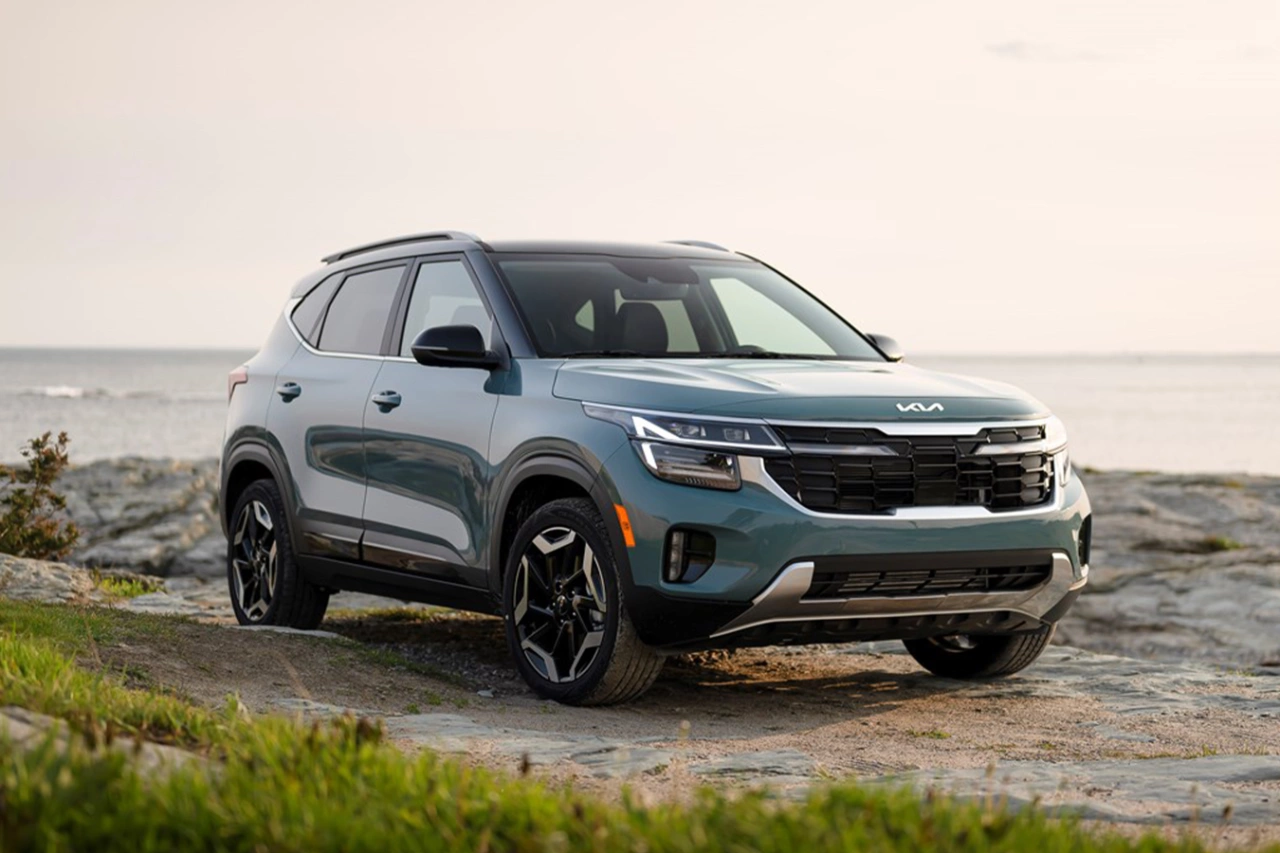
- Price: From $30,500 plus on-road costs (S)
- Drivetrain: 2.0L NA or 1.6L turbo 4-cylinder petrol engines, 110kW/180Nm (2.0L) or 146kW/265Nm (1.6T), CVT (2.0L) or 8-speed auto (1.6T), 2WD (2.0L) or AWD (1.6T)
- Combined fuel economy, CO2 emissions, fuel type: 6.9-7.4L/100km, 157-175g/km, 91RON
- Warranty: Seven-year/unlimited km, 12 months of roadside assistance with each dealer service up to eight years in total
- Five-year service cost: $2,082 ($416 per year) – $2,187 ($417 per year)
| Driving | |
| Interior | |
| Practicality | |
| Overall value |
Things we like
- Wide range of variants
- Practical and spacious interior
- Well priced across the range
Not so much
- Engines can be thirsty
- Hard interior plastics
- 1.6T’s short 10,000km service intervals
With almost 8000 sold in 2024, the Kia Seltos is one of two small SUVs in the brand’s line-up and is it positions itself in one of the most popular segments in the country. The Seltos has been around since 2019 and while a replacement is due in the next year or so, there’s still plenty to like about the current model.
The Seltos’ interior is definitely its biggest selling point because it’s quite practical for the size. Two taller adults will be quite comfortable in the rear seat, while the doors open nice and wide for easy fitment of child seats. The Seltos’ boot is a good size as well at 468 litres for the base S (433L for every model above that as they all use a full size alloy spare, which is very rare in this segment) with the seats up and 1,428L-1,393L with the rear seats folded.
The dashboard is well laid out and is ergonomically sound, while the new digital driver’s display has made it feel more in line with newer Kia models. The interior quality could be improved however, as there are barely any soft touch materials – everything is hard. But the last-generation touchscreen software is still easy to use and is more colourful and brighter than the newer-generation unit that features in newer Kia models.
The Seltos offers two four-cylinder petrol engines: a 2.0-litre naturally aspirated unit or a turbocharged 1.6L with a CVT auto on the former and an eight-speed auto on the latter. The 2.0L is perfectly adequate for most buyers, with the 1.6T adding appreciably more grunt. Neither are very efficient, however, and unlike its Hyundai Kona cousin, there’s no hybrid option available in this generation.
Thanks to Kia’s local ride and handling tuning program, the Seltos drives very well. The ride quality is especially supple, while the handling is fun as well. Overall, while the Seltos does feel a bit dated and doesn’t offer a hybrid option, it’s still a good small SUV. It’s roomy, drives pretty well, offers a wide range of models and features two willing engine options. It’s no surprise that the Seltos still manages to sell well, even at almost six years of age.
Skoda Kamiq
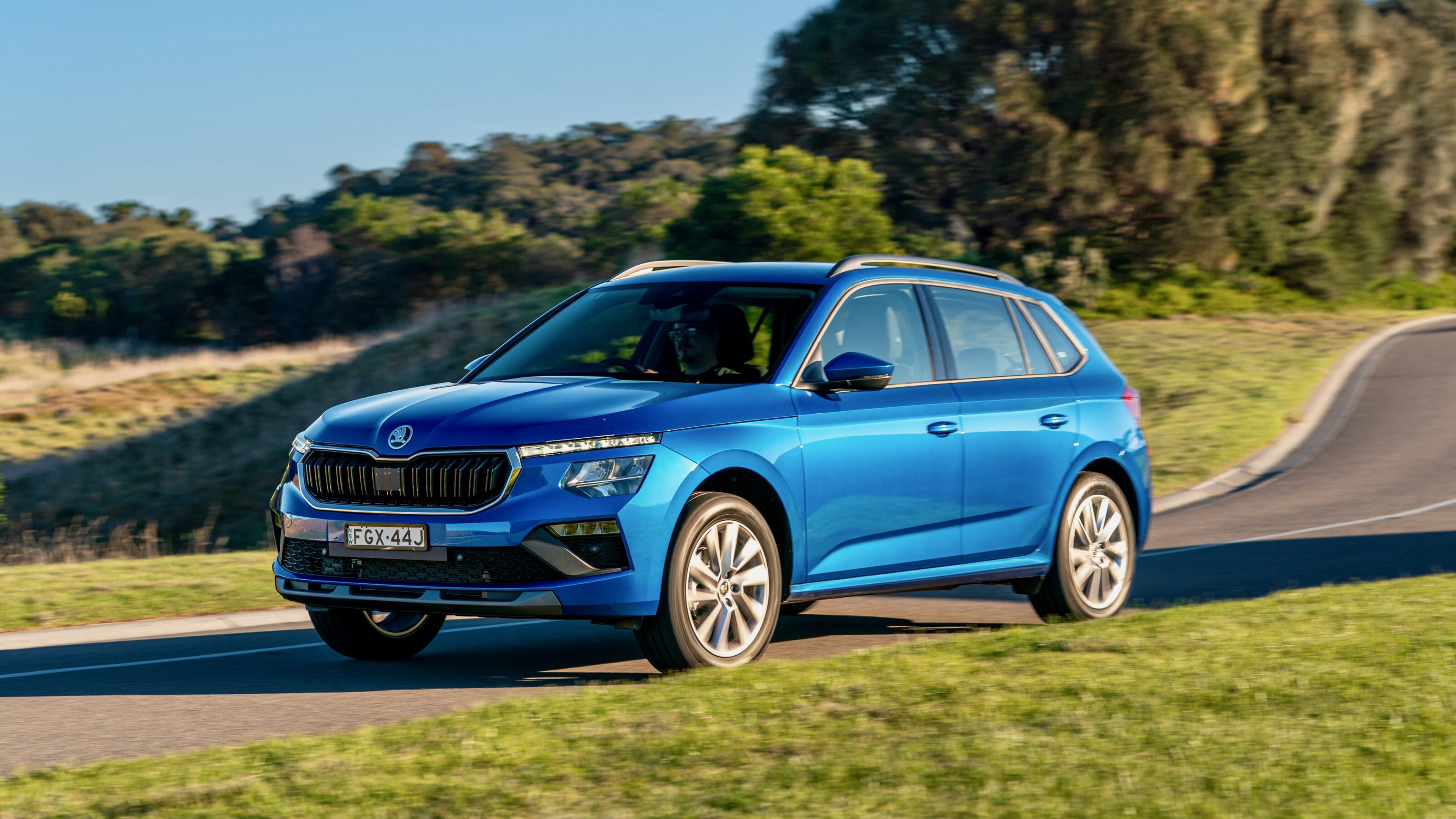
- Price: From $33,990 drive away (Select)
- Drivetrain: 1.0L turbo 3-cylinder or 1.5L turbo 4-cylinder petrol engines, 85kW/200Nm (1.0T) or 110kW/250Nm (1.5T), 7-speed dual-clutch auto
- Combined fuel economy, CO2 emissions, fuel type: 5.5-5.6L/100km, 125-126g/km, 95RON
- Warranty: Seven-year/unlimited km, 12 months’ roadside assistance with each dealer service
- Seven-year service cost: $3,650 ($520 per year)
| Driving | |
|---|---|
| Interior | |
| Practicality | |
| Overall value |
Things we like
- Good value for money at the entry point
- Seven-year warranty unique for a European car maker
- Practical and good quality interior
Not so much
- Big price gap between the two available variants
- Larger engine not available for under $45k drive away
- Service pricing isn’t cheap
The Skoda Kamiq has been on sale in Australia since 2020 and in that time has earned itself a loyal base of buyers, though we think it deserves to sell better. As with pretty much every other modern era Skoda, the Kamiq is far more practical than its modest sizing might suggest – even though it’s only 4,241mm long or 34mm shorter than a Mazda CX-3, its 400-litre boot is much larger than the Mazda CX-30 and the 1,375L when the seats are folded is impressive for its size.
Priced from $33,990 drive away, Skoda also includes a lot of its ‘simply clever’ features in the Kamiq range too, like an umbrella in the driver’s door and various storage spots throughout the cabin to ensure that you’re never left wanting for a place to store your stuff. The spaciousness of the Kamiq is also impressive, especially the headroom thanks to its tall roof, which is almost class-leading.
The front cabin of the Kamiq is high quality – more so than a lot of rivals – with a nice mix of soft touch plastics and quality fabrics like on the dashboard fascia, while the leather steering wheel is lovely. The available touchscreens are easy to use and feature wireless smartphone mirroring, and even the base model Select uses a digital driver’s display.
There are two turbocharged petrol engines available in the Kamiq: either an 85kW/200Nm 1.0-litre three-cylinder unit or a larger 110kW/250Nm 1.5-litre four-cylinder unit, with a surprisingly minimal difference in claimed fuel consumption (5.3L/100km for the 1.0L versus 5.5L/100km for the 1.5L). Both use a seven-speed dual-clutch automatic transmission, and both are refined and gutsy.
Skoda is the only European manufacturer to cover its new products with a seven-year/unlimited km warranty and while service pricing isn’t cheap at $3,650 for a seven-year/105,000km plan, it’s less expensive than its Volkswagen cousin and we like that it can be bundled into the car’s price. Overall, the Kamiq deserves more attention from buyers because it’s a well accomplished overall package that does little wrong.
Volkswagen T-Cross

- Price: From $33,990 plus on-road costs (Life)
- Drivetrain: 1.0L turbo 3-cylinder petrol engine, 85kW/200Nm, 7-speed dual-clutch auto
- Combined fuel economy, CO2 emissions, fuel type: 5.4L/100km,123g/km, 95RON
- Warranty: Five-year/unlimited km, 12 months’ roadside assistance with each dealer service
- Five-year service cost: $3,479 ($696 per year), service pack: $2,850 ($570 per year)
| Driving | |
|---|---|
| Interior | |
| Practicality | |
| Overall value |
Things we like
- Facelift has improved the T-Cross with more features and better quality
- Practical interior with sliding rear seat
- Well equipped across the range
Not so much
- Expensive service pricing
- No larger engine available locally
- Low-speed transmission indecisiveness
Volkswagen’s smallest SUV is the T-Cross and it received a mid-life facelift last year with more equipment, higher-quality interior materials and a refreshed model line-up with the formerly-optional R-Line package now its one model at the top of the range. The updated T-Cross range is priced from $33,990 plus on-road costs.
Unlike its Skoda Kamiq cousin, the T-Cross is only available with the smaller 1.0-litre turbo-petrol engine in Australia – buyers wanting more ‘go’ must buy the Czech or the T-Cross’ larger T-Roc sibling. But we think the peppy 1.0L donk in the T-Cross is more than grunty enough for most buyers and despite needing premium unleaded, it will be quite efficient in the real world.The T-Cross drives quite nicely and is refined and mature, as you’d expect from a Volkswagen.
The T-Cross’ cabin is not quite as good quality as the Kamiq but it’s still plusher than a Kona or Seltos. It’s also ergonomically excellent with all major features represented by buttons and not buried in the touchscreen. Speaking of the touchscreen, it’s a breeze to use and is bright and quick. The front of the T-Cross’ cabin is also practical with big door bins, a box underneath the armrest and a big tray underneath the centre console.
The rear seat is comfortable and spacious too, which is further helped by the sliding rear seat to open up the boot a bit more or save more legroom for rear passengers. There are also USB ports for device charging, door bins and map pockets, though unfortunately no air vents. The T-Cross’ boot measures 385 litres with the rear seat up and slid all the way back, though this opens up to 455L when slid forward, though to the detriment of rear legroom.
Like the Kamiq, the T-Cross’ servicing costs aren’t cheap – in fact, at $696 per year for the first five years, they’re quite expensive, though thankfully, buyers can lessen that cost slightly by opting for a service pack at $2,850 for a five-year pack. That – and the typically-indecisive dual-clutch transmission – are the only issues with the T-Cross: it’s well-rounded, as you’d expect, and is a good option in the small SUV segment.
Subaru Crosstrek
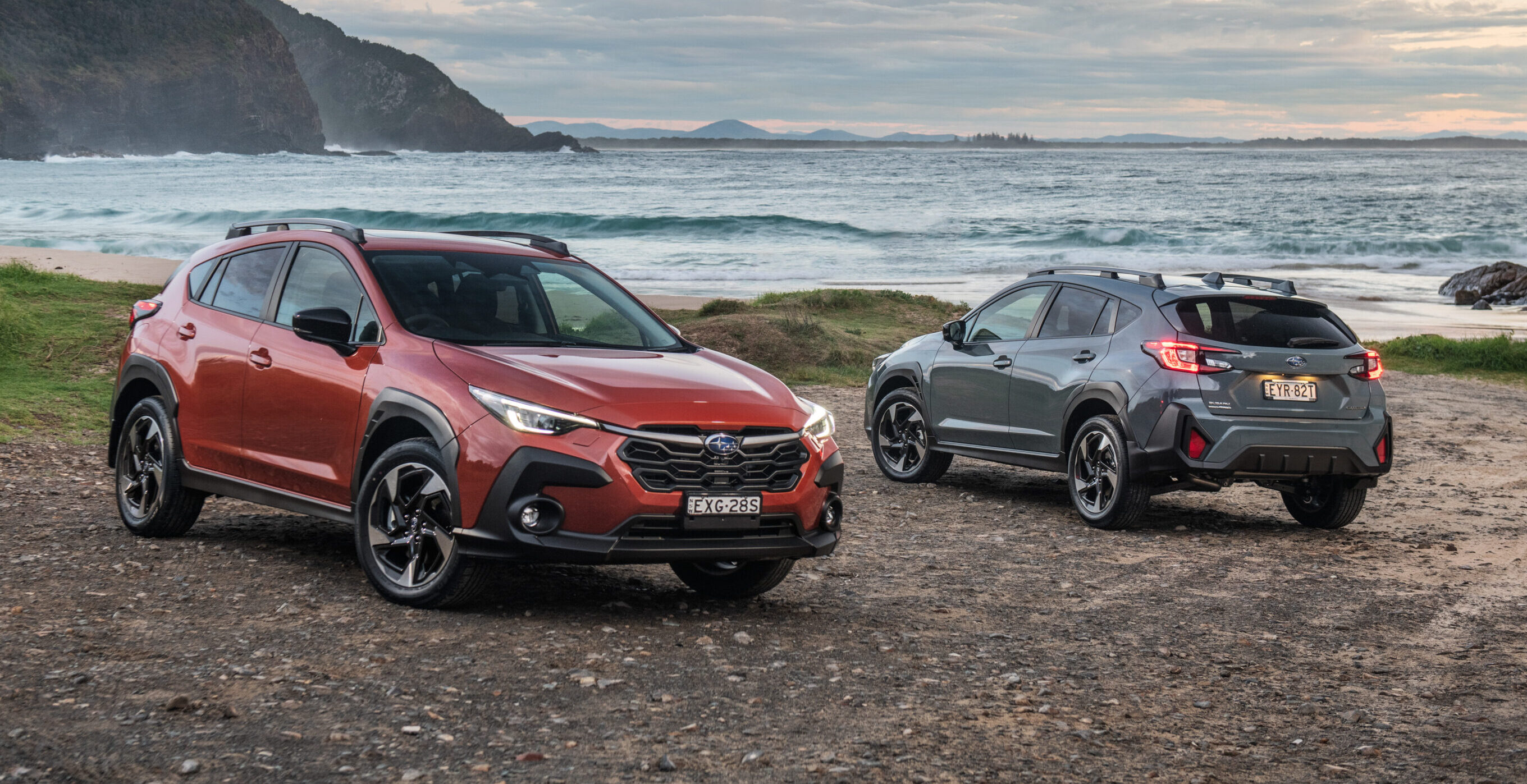
- Price: From $35,490 plus on-road costs (2.0L)
- Drivetrain: 2.0L 4-cylinder petrol or hybrid engine, 115kW/196Nm or 110kW/196Nm, CVT auto
- Combined fuel economy, CO2 emissions, fuel type: 6.5L-7.2/100km,147-165g/km, 91RON
- Warranty: Five-year/unlimited km, 12 months roadside assistance
- Five-year service cost: $2,373.19 ($474 per year)
| Driving | |
|---|---|
| Interior | |
| Practicality | |
| Overall value |
Things we like
- One of the only off-road capable small SUVs
- Well equipped across the range
- Comfortable and easy to drive
Not so much
- Very mild optional hybrid system
- Small boot limits practicality
- Performance and economy could be better
If you’re looking for the best all-round small SUV that can comfortably go off-road, the Subaru Crosstrek is the car to choose. With the company’s famous ‘symmetrical’ all-wheel drive system, 220mm of ground clearance and its ‘X-Mode’ off-road modes, the Crosstrek can go much further than all its rivals – bar the hardcore Suzuki Jimny, though that’s much smaller and way less practical and refined.
Off-road chops aside, the Crosstrek is a solid offering in the segment. Its interior offers reasonable quality and a huge 11.6-inch touchscreen with features like sat-nav, digital radio and wireless smartphone mirroring. The seats are comfortable and as we’ve seen with many Subarus for this century, it’s packed with safety features like nine airbags, AEB, lane keeping assistance and adaptive cruise control.
Under the bonnet is a 2.0-litre four-cylinder ‘Boxer’ engine with or without hybrid assistance. While the engine can feel a bit sluggish, we’d still not bother with the hybrid as it only reduces the fuel consumption by 0.7L/100km to 6.5L/100km, but feels no different on the road and its battery location removes the spare wheel. Later in 2025 will be a more powerful and more efficient 2.5-litre ’strong hybrid’ version of the Crosstrek, and if you’re set on a hybrid, we’d wait for that.
The Crosstrek is otherwise quite nice to drive with a comfortable ride, good visibility and reasonable refinement as well. Likewise, Subaru’s five-year warranty is reasonable for the industry, though its service pricing isn’t cheap. While we’re moaning, the Crosstrek’s 291-litre boot is small and while the rear seat is roomier than you’d expect, it doesn’t feature air vents.
Overall, the Subaru Crosstrek is a popular offering in the small SUV segment. Its cabin is more spacious than you might expect, the whole range is well equipped and it offers an enjoyable driving experience – plus, it will go much further off-road than almost all of its rivals. Its lacklustre drivetrains could be better, as could its small boot, but it’s an overall solid offering in the segment.
Honda HR-V
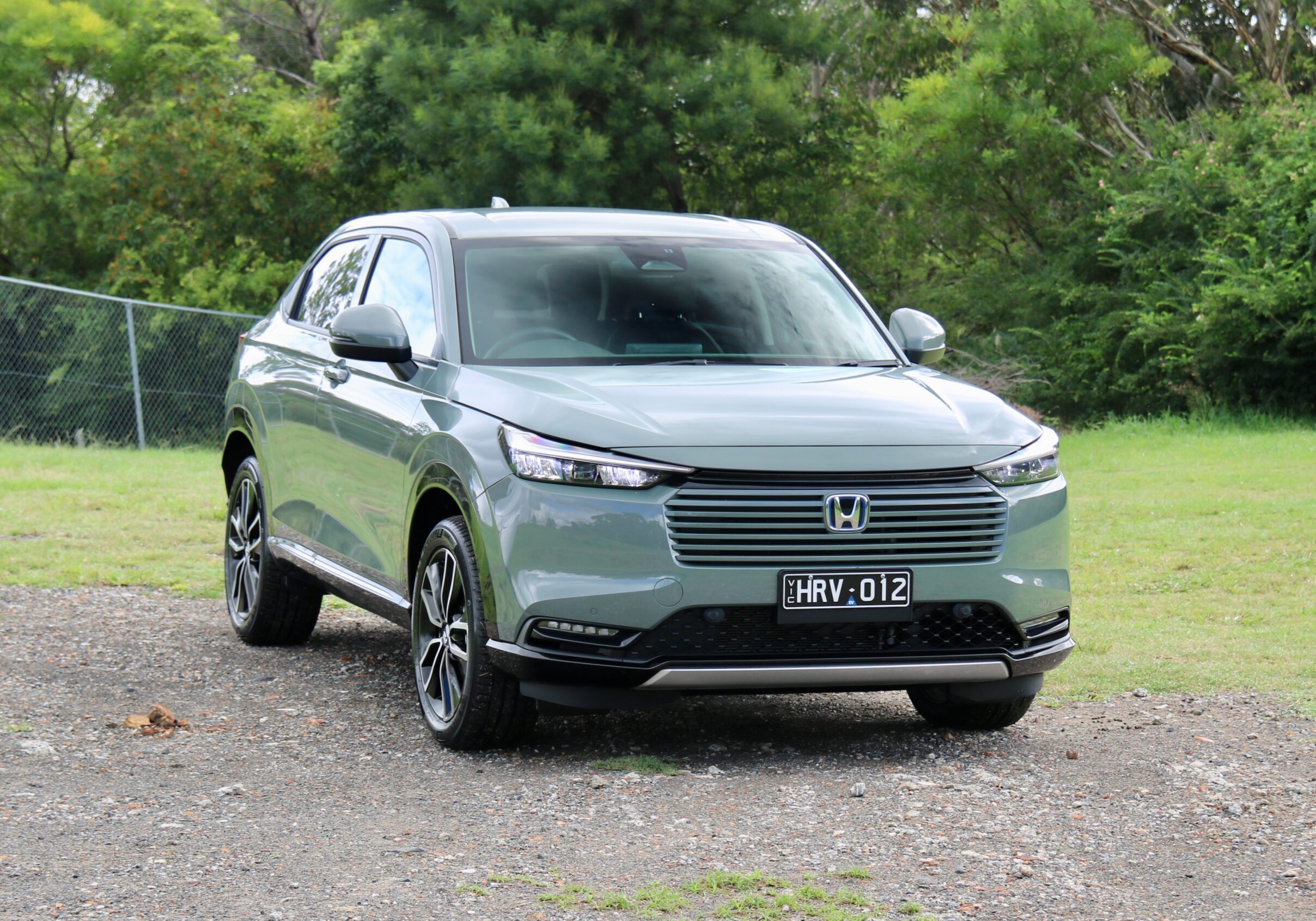
- Price: From $32,900 drive away (Vi X)
- Drivetrain: 1.5L 4-cylinder petrol or hybrid engine, 89kW/145Nm or 96kW/253Nm, CVT auto
- Combined fuel economy, CO2 emissions, fuel type: 4.3L-6.2/100km, 98-142g/km, 91RON
- Warranty: Five-year/unlimited km, five years roadside assistance
- Five-year service cost: $995 ($199 per year)
| Driving | |
|---|---|
| Interior | |
| Practicality | |
| Overall value |
Things we like
- Very practical, especially with the ‘Magic’ seats
- Comfortable and easy to drive
- Hybrid is very efficient
Not so much
- Only a four-seater
- No spare wheel
- Petrol engine is underpowered
Standing for “high-riding revolutionary vehicle”, the Honda HR-V small SUV was originally introduced in 1999 and two generations later, the HR-V has just been given a mild update with styling tweaks, some new equipment and a new mid-spec model. Pricing starts at $32,900 drive away, though for the better equipped hybrid, you’ll be spending at least $39,900 drive away.
The interior of the HR-V is typically Honda good quality, with cool touches like the climate control knobs lighting up blue or red when turning the temperature up or down, and side air vents that can be set to direct airflow towards the roof. The central touchscreen is a breeze to use, and features sat-nav, DAB+ and wireless smartphone mirroring across the range.
Turning to the back seat reveals the HR-V’s party piece in the small SUV segment: its excellent packaging. The rear seat is one of the roomiest in the segment with excellent legroom and headroom, while two adults will be quite comfortable – and that’s all you’re getting in there, because the HR-V is only a four-seater in Australia.
Making up for that slightly are Honda’s ‘Magic Seats’, which allow for a completely flat loading bay for when the rear seats are folded, but the cool trick is that the seat base folds up to rest against the backrest, allowing for taller items to be carried in the rear cabin. The boot is not massive at 304 litres, though that extends to a large 1,274L with the rear seats folded. Annoyingly though, there’s no spare wheel.
The driving experience of the HR-V is positive – the petrol engine feels a bit underpowered in anything other than urban driving, but the hybrid is noticeably better and far more efficient, rated at just 4.3L/100km for fuel consumption. It’s also refined and reasonably fun to drive, and quite comfortable. Honda’s five-year warranty can be extended to eight years in total, while the $199 cost for each of its first five services is quite cheap too.
Volkswagen T-Roc
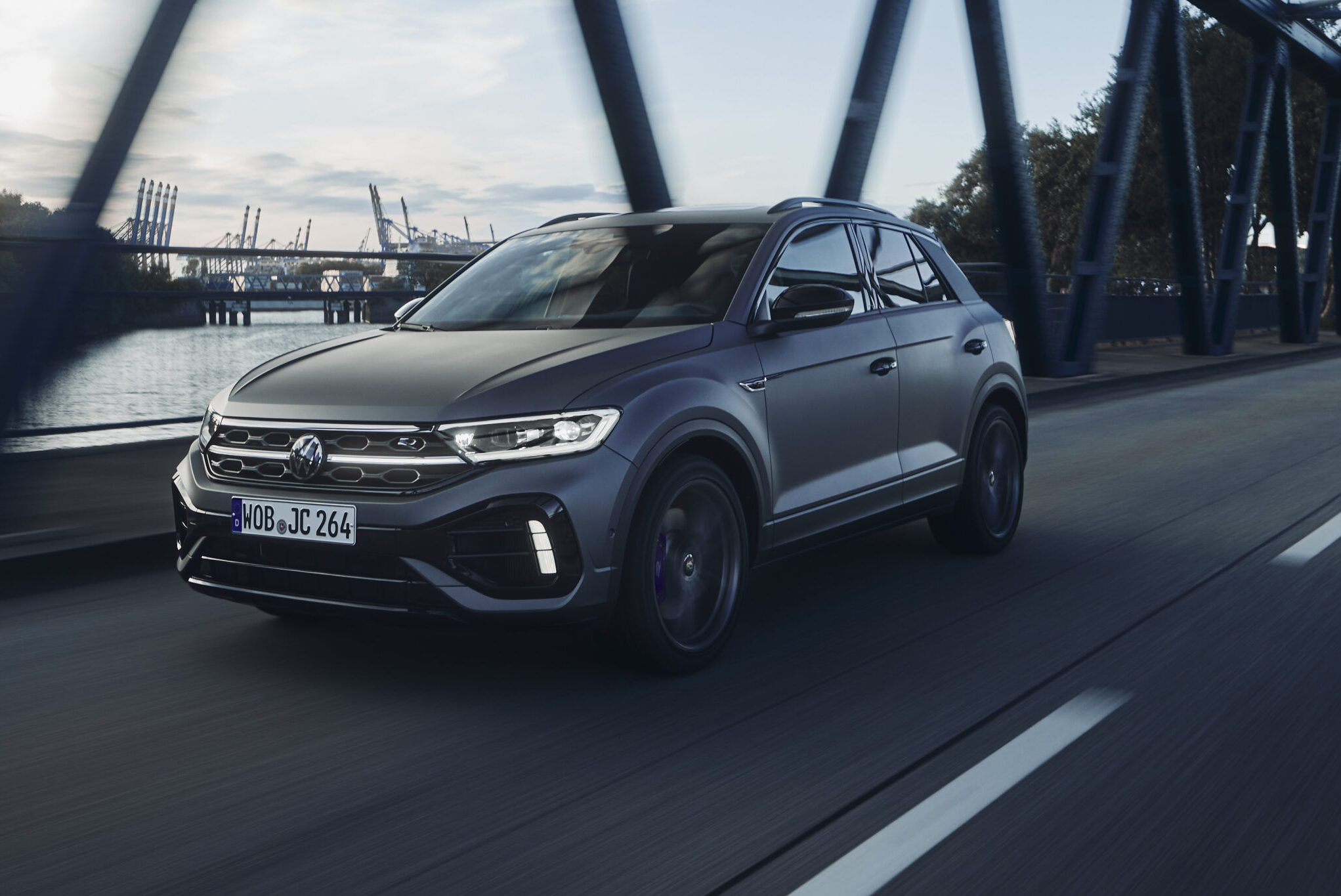
- Price: From $38,990 plus on-road costs (CityLife)
- Drivetrain: 1.4L or 2.0L 4-cylinder turbo petrol, 110kW/250Nm or 140kW/320Nm (140TSI) or 221kW/400Nm (R), 8-speed auto (1.4T) or 7-speed dual-clutch auto (140TSI and R), 2WD or AWD
- Combined fuel economy, CO2 emissions, fuel type: 5.4L-8.3/100km, 144-189g/km, 95 or 98RON
- Warranty: 5-year/unlimited km, one year of roadside assistance extendable with each dealer service
- Five-year service cost: $3,344 ($669 per year) – $4,025 ($805 per year), service plans range from $2,770 ($554 per year) to $3,385 ($677 per year)
| Driving | |
|---|---|
| Interior | |
| Practicality | |
| Overall value |
Things we like
- A great all-rounder in typical VW fashion
- Punchy engine options, even the base 1.4L turbo
- Even the base CityLife is well equipped
Not so much
- Expensive service pricing
- Dark interior
- Indecisive dual-clutch auto
A previous winner of Wheels Best Small SUV in 2023, the Volkswagen T-Roc has a lot going for it and in typical Volkswagen fashion, is a great all-rounder. With almost 8,000 sold in 2024, the T-Roc was the brand’s best-selling vehicle behind only the Amarok ute, and it’s easy to see why.
With pricing starting at $38,990 plus on-road costs with a recent equipment upgrade across the range, and a wide variety of models, there’s a T-Roc model for a variety of tastes: the CityLife and Style are refined and comfortable, while the R-Line is quick and sporty and the R quite fast.
Regardless of model chosen, the T-Roc’s quality is solid and it’s practical as well, with plenty of interior storage space. Though the interior is dark and not as airy as a Hyundai Kona, it’s still spacious enough for four adults. The infotainment systems are a breeze to use and unlike some rivals, the physical AC controls are ergonomically excellent. The 445-litre boot is large for the segment, and opens up to almost 1,300L with the rear seats folded.
The driving experience of the T-Roc is mature, as you’d expect for a Volkswagen. The 110TSI engine in the CityLife and Style is refined and punchy, with the larger 2.0-litre units in the R-Line and R adding even more grunt – the R’s 4.9-second 0-100km/h sprint time is evidence of that. The base models are relaxing to drive, but can put a smile on your face, a smile that grows to a grin with the R-Line and R – this is a fun small SUV to drive.
While the engines can be quite efficient, the T-Roc range does fall a bit with service costs: up to $677 annually is more than double that of some rivals. But overall, the T-Roc is typically Volkswagen: mature, refined, nice to drive, practical and good quality.
Toyota Corolla Cross
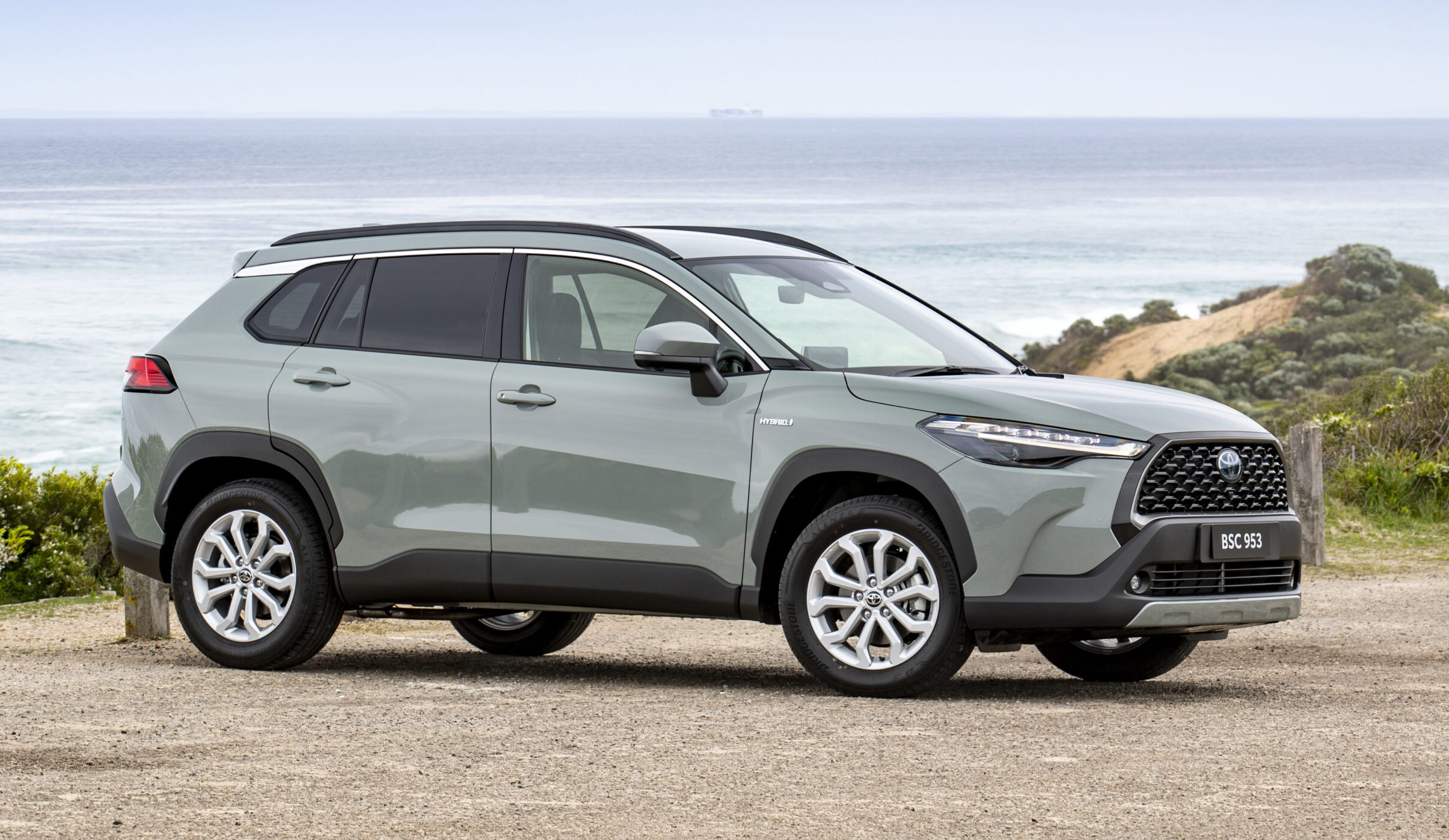
- Price: From $36,480 plus on-road costs (GX)
- Drivetrain: 2.0L 4-cylinder hybrid, 146kW, CVT auto, 2WD or AWD
- Combined fuel economy, CO2 emissions, fuel type: 4.3-4.4L/100km, 97g-101g/km, 91RON
- Warranty: 5-year/unlimited km, 8-year/160,000km battery warranty, optional assistance
- Five-year service cost: $1,275 ($255 per year)
| Driving | |
|---|---|
| Interior | |
| Practicality | |
| Overall value |
Things we like
- Well sized and practical
- 2.0-litre hybrid is punchy but quite efficient
- Good to drive with great handling
Not so much
- Lots of equipment reserved for top-spec Atmos
- Expensive pricing across the range
- Small 36-litre fuel tank in 2WD models
It’s not unusual for manufacturers to offer multiple models in the same segment and Toyota is one such manufacturer: in the small SUV segment, it offers not only the Yaris Cross and C-HR, but also the Corolla Cross, the latter of which is the largest and most practical Toyota small SUV offering.
Priced from $36,480 plus on-road costs for the entry-level GX, like its siblings, the Corolla Cross is hybrid-only and in this case, is only available with the larger 2.0-litre hybrid drivetrain, making a healthy 146kW – or the same power as the turbocharged 1.6L Kia Seltos. Both front- and all-wheel drive are available on the mid-spec GXL and top-spec Atmos as well.
The cabin of the Corolla Cross is quite similar in look to the regular Corolla with an almost identical dashboard layout, though the lower centre console is taller and more practical. There’s plenty of cabin space in the Corolla Cross too, particularly in the rear, while the boot measures from a small 380 litres in the top-spec Atmos AWD to a healthier 425L in the GX and GXL 2WD models.
The driving experience of the Corolla Cross is not the most refined, but the ride quality is compliant and mature on higher-speed roads, while the handling – particularly in the AWD models with their multi-link rear suspension set up – is enjoyable as well.
As you’d expect for a Toyota, the servicing is cheap at just $1,275 for the first five years and servicing at a Toyota dealership extends the mechanical warranty to seven years in total, and the battery warranty to 10 years in total if annual battery checks are performed. It’s clear that while the Corolla Cross’ pricing is not cheap, its running costs are low and that’s in addition to its other attributes: it’s practical, good to drive and a great all-rounder.
Mitsubishi Eclipse Cross

- Price: From $31,990 plus on-road costs (ES)
- Drivetrain: 1.5L turbo 4-cylinder or 2.4-litre 4-cylinder PHEV, 110kW/250Nm or 157kW/332Nm, CVT auto, 2WD or AWD
- Combined fuel economy, CO2 emissions, fuel type: 1.9-7.7L/100km, 43g-174g/km, 91RON
- Warranty: 5-year/100,000km extendable by dealer servicing up to 10-year/200,000km, 8-year/160,000km battery warranty, 12-month roadside assistance extendable up to four years
- Five-year service cost: $1,945–$2,245 ($389–$449 per year)
| Driving | |
|---|---|
| Interior | |
| Practicality | |
| Overall value |
Things we like
- Well sized and practical
- Plug-in hybrid a unique option for the price
- Well equipped across the range
Not so much
- Plug-in hybrid is expensive
- Dated technology offering
- Petrol engine is thirsty
Production for Australia has already stopped but the Mitsubishi Eclipse Cross still has appeal for small SUV buyers. Launched in 2017 as the slightly larger and more premium sibling to the big-selling ASX, the Eclipse Cross features a practical cabin that can comfortably carry four adults and their luggage.
The cabin of the Eclipse Cross feels a bit dated in parts like the basic touchscreen, but it’s ergonomically sound and the seats are comfortable. The quality is reasonable, with lots of soft touch points, and it’s certainly more upmarket than the ASX that sits below it in price. Its 405-litre boot is a good size for the segment as well.
Pricing starts at $31,990 plus on-road costs for the entry-level ES, and buyers can choose from not only multiple models but also different drivetrains, including a plug-in hybrid that’s priced from $47,790 +ORC.
The turbocharged 1.5-litre petrol engine in the Eclipse Cross range is refined and gutsy, though it can be a touch thirsty and the CVT zaps power out of the engine. The driving experience is softer and less well damped than a lot of rivals, but it’s still comfortable enough. It’s not sporty like the Eclipse name suggests, but the plug-in hybrid and its cool all-wheel drive system can be fun to drive.
Where the Eclipse Cross has more appeal is in its aftersales program with a five-year warranty that can be extended to 10 years in total with dealer servicing. Add in low capped price servicing and it’s easy to see with the Eclipse Cross has appeal to small SUV buyers.
Suzuki Jimny
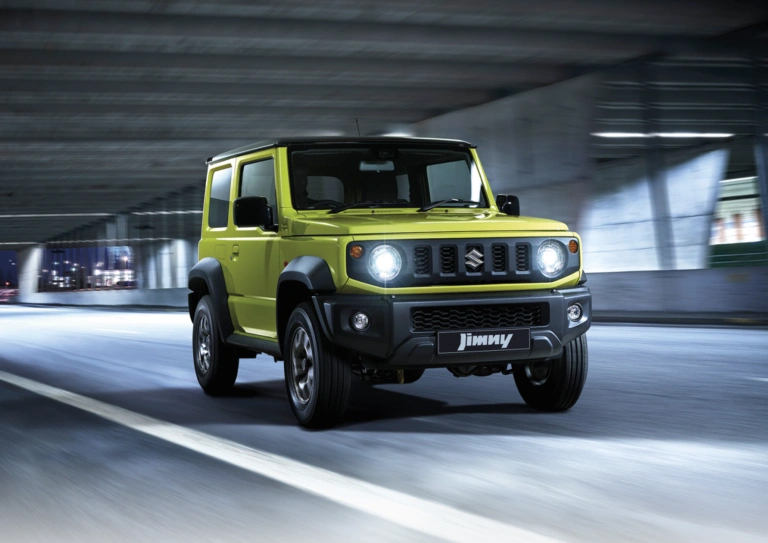
- Price: From $30,490 plus on-road costs (Lite)
- Drivetrain: 1.5L 4-cylinder, 75kW/130Nm, 5-speed manual or 4-speed auto, full-time four-wheel drive
- Combined fuel economy, CO2 emissions, fuel type: 6.4-6.9L/100km, 146-161g/km, 91RON
- Warranty: 5-year/unlimited km, five years of roadside assistance
- Five-year service cost: $2,265 ($453 per service)
| Driving | |
|---|---|
| Interior | |
| Practicality | |
| Overall value |
Things we like
- Cute and characterful
- The only true 4×4 in the segment
- Both three- and five-door versions
Not so much
- Sluggish and thirsty engine
- Not cheap to buy or service
- Basic cabin
If you’re looking for a small SUV that will be able to take you literally anywhere, the Suzuki Jimny is your only option. The Jimny is an icon and if you want cheap off-road thrills, it’s the car to buy. But if you’re after a small SUV with no off-road credentials, there are much better options.
Under the bonnet of the Jimny is a 75kW/130Nm 1.5-litre four-cylinder petrol engine mated to either a five-speed manual or four-speed automatic, and a full-time four-wheel drive system. It’s this 4WD system that gives the Jimny its go-anywhere ability and you’ll find that it’s able to go way further off the beaten track than even a Subaru Crosstrek.
But on the road, the Jimny is less than impressive thanks to poor handling, a choppy ride and a general lack of refinement. In anywhere other than city-speed commuting, the Jimny’s lack of performance is noticeable and it feels sluggish – especially the five-door Jimny XL. Likely because of how hard you have to work the engine to get anything but basic progress, it can be quite thirsty.
The Jimny’s cabin is – as you’d expect for its sizing – pretty small and while Suzuki has tried to use up every bit of room inside the boxy body, it’s still not what you’d call huge. There’s also a new five-door Jimny XL that adds length between the wheels, but the boot is no larger. The dashboard feels dated with its 9.0-inch touchscreen the one piece of technology inside, and storage spots are limited, but the materials are hard wearing and feel built to last.
Suzuki covers the Jimny with a five-year/unlimited km warranty and its service pricing is fairly expensive for such an old-tech engine. But overall, while the Jimny may feel old, it’s tremendously charming and capable off road. We wish it were just a bit better on the road as it would be more recommendable, but given how popular it is, many don’t have an issue with it.
BYD Atto 3
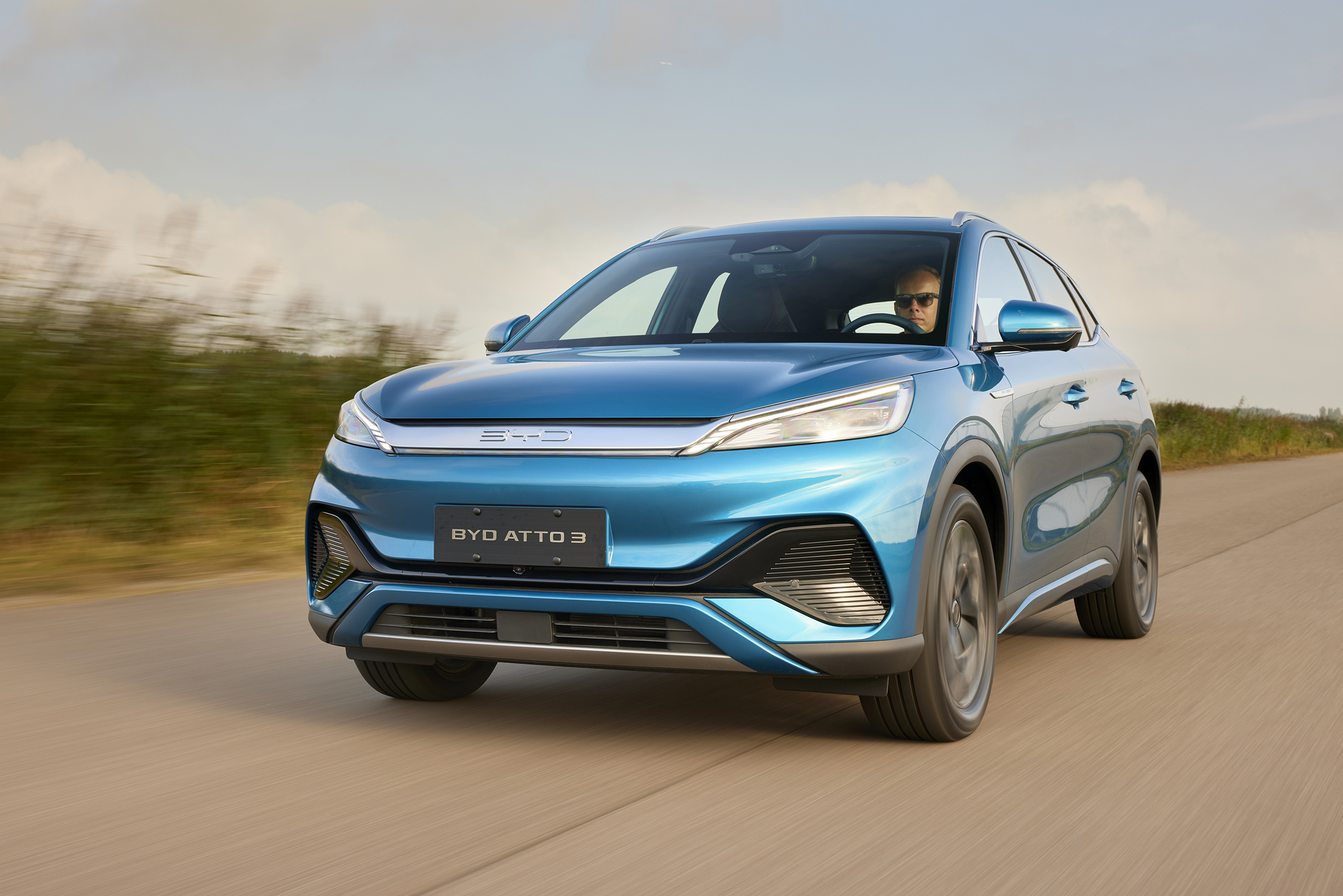
- Price: From $39,990 plus on-road costs (Essential)
- Drivetrain: 150kW/310Nm electric motor, 49.9-62.2kWh battery
- WLTP range: 345km-420km
- Warranty: 6-year/150,000km, 8-year/160,000km battery warranty, 12 months of roadside assistance renewed with each BYD service
- Five-year service cost: $1,628 ($325 per service)
| Driving | |
|---|---|
| Interior | |
| Practicality | |
| Overall value |
Things we like
- Excellent value for money
- Good quality and practical cabin
- Lots of standard equipment
Not so much
- Essential’s range could be better
- Big price gap between the two models
- Rubbish standard tyres
There’s a brand currently on sale in Australia making big waves, and this is the car that started it all for them locally. Of course, we’re talking about BYD and its Atto 3 small electric SUV, which has sold solidly since its introduction locally in 2022.
Since its launch, the Atto 3’s entry price has fallen to just $39,990 plus on-road costs for the new entry-level Essential model, and it’s pricing that attracted buyers to the Atto 3 in the first place. But there’s more to the model, including a long standard equipment list, an attractive and good quality cabin, and solid practicality.
The Atto 3 offers a choice of two batteries: a 49.9kWh one in the base Essential or a larger 62.2kWh unit in the upper-spec Premium. Range is WLTP-rated at 345km for the Essential and 420km for the Premium, with DC fast charging at up to 70kW in the Essential and 88kW in the Premium. Both variants use a 150kW/310Nm electric motor that drives the front wheels, and performance is peppy rather than brisk, but that’s fine.
The Atto 3’s driving dynamics aren’t incredible either, it must be said, which is something that would be better without the standard Atlas Batman tyres. But the Atto 3 is comfortable to drive and offers good bump suppression. The Atto 3’s cabin is also funky to look at, with a huge 12.8-inch touchscreen that rotates and the quality is pretty good as well.
Overall, the BYD Atto 3 is a solid entrant to the small SUV segment and it’s no surprise that it has sold well locally: it’s very well priced, good quality, reasonable performance, practical and covered by an above-average warranty. The new Essential trim has made it even better priced than before, yet it’s still well equipped across the range.
MG ZS EV

- Price: From $36,888 drive away (Essence)
- Drivetrain: 130kW/280Nm (Essence) or 115kW/280Nm (Long Range) electric motor, 51.1-72.6kWh battery
- WLTP range: 320km-440km
- Warranty: 10-year/200,000km, 12 months of roadside assistance renewed with each MG service
- Six-year service cost: $1,998 ($333 per year)
| Driving | |
|---|---|
| Interior | |
| Practicality | |
| Overall value |
Things we like
- Excellent value for money
- Good quality and practical cabin
- Lots of standard equipment
Not so much
- Range could be better
- Almost sold out
- Odd driving position
MG’s first electric car in Australia, the popular ZS EV, is not long for this world. Priced at a special $36,888 drive away for both the base Essence and upper-spec Long Range to clear stock ahead of a new model later in the year, the ZS EV is currently excellent buying at a bargain price.
The ZS EV models use a front-mounted electric motor, with the Essence making 130kW/280Nm, though the Long Range makes slightly less power at 115kW/280Nm. Both offer peppy performance, especially in urban situations. The ZS EV’s ride quality isn’t bad either, though it can feel a bit underdamped in larger bumps.
The cabin of the ZS EV is nearly identical to the ZS that debuted almost 10 years ago, so it doesn’t feel that modern, but the quality is reasonable and it’s practical as well. The 10.25-inch touchscreen is well equipped as well, with features like sat-nav, smartphone mirroring and even access to the brand’s ‘iSmart’ smartphone app.
The ZS EV’s cabin is also practical and can carry four adults comfortably. The rear seat is roomy enough for two, especially in headroom, and the 359-litre boot is reasonable as well. Covering the ZS EV is a 10-year/200,000km warranty and the service cost for the first six years costs just $1,998.
Overall, the MG ZS EV was a commendable first effort for the brand, and it’s no surprise to see that it’s sold well locally. Now in run-out at a bargain price, the ZS EV’s appeal is even stronger – especially now that the Long Range model is priced the same as the Essence with the smaller battery. While it’s not the newest car around, the ZS EV still offers a good range, a practical cabin and reasonable performance as well.
Best Small SUV series
Looking to get into a brand-new small SUV? Our stories below will guide you to the model that best suits your needs!

